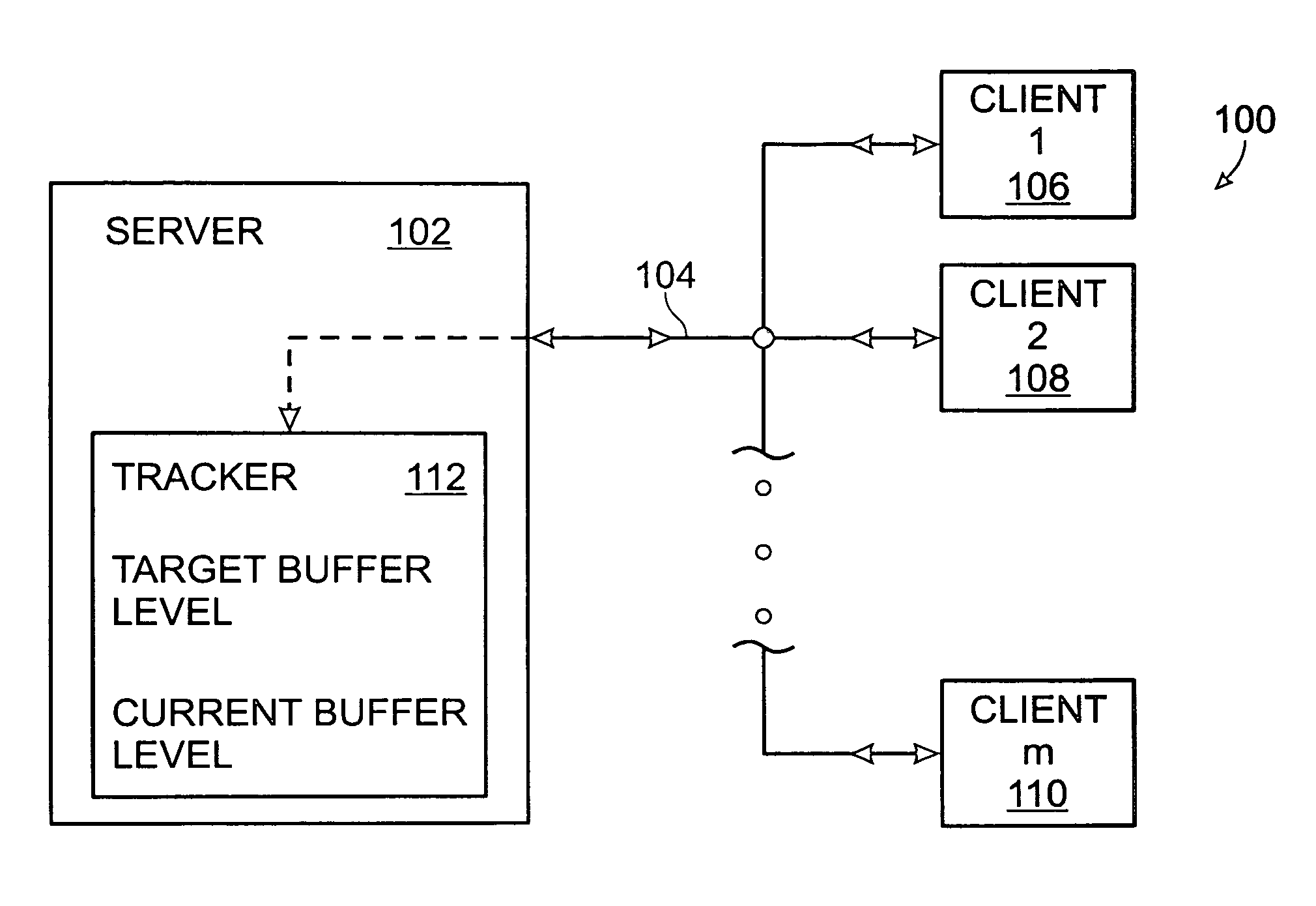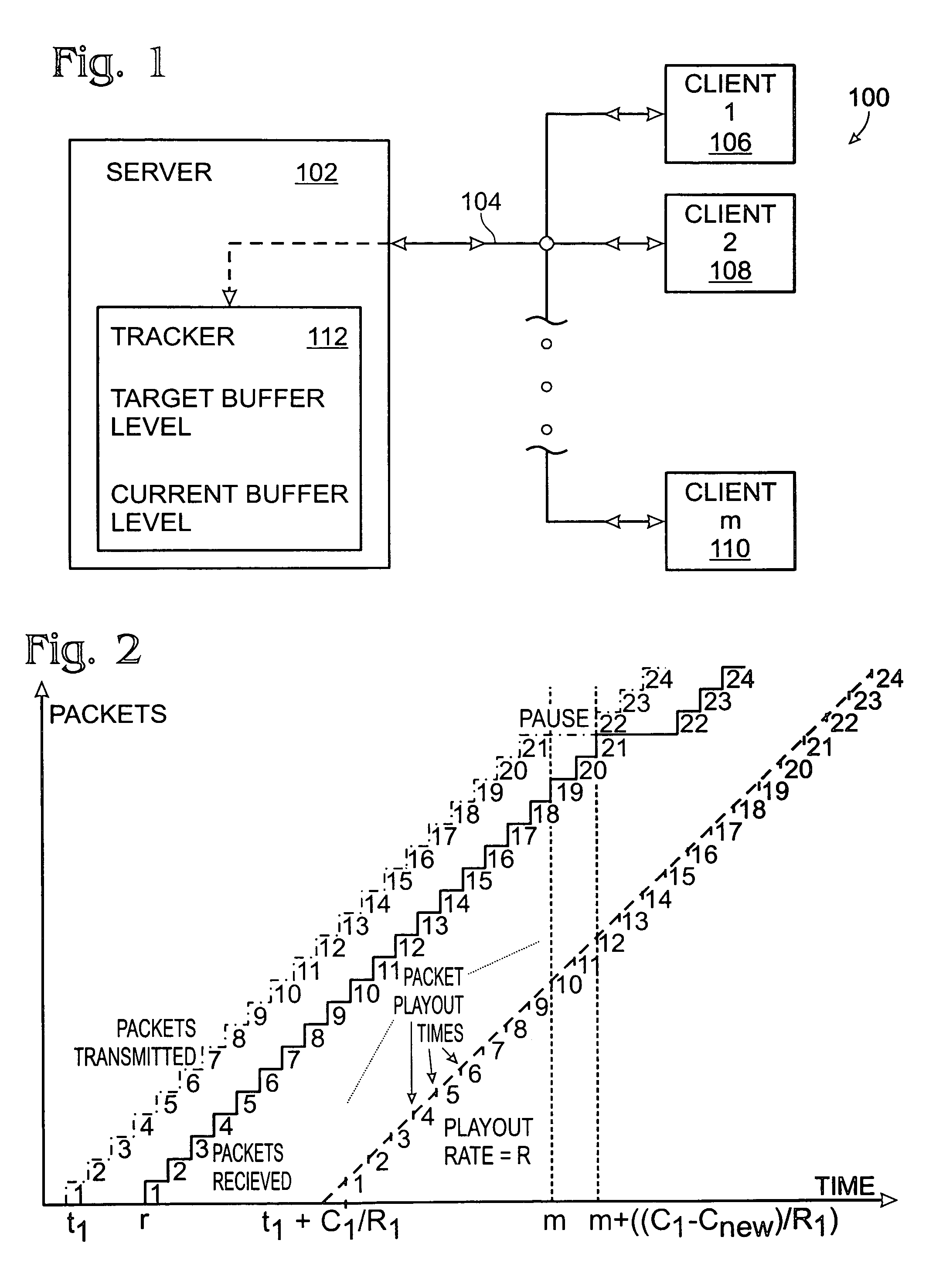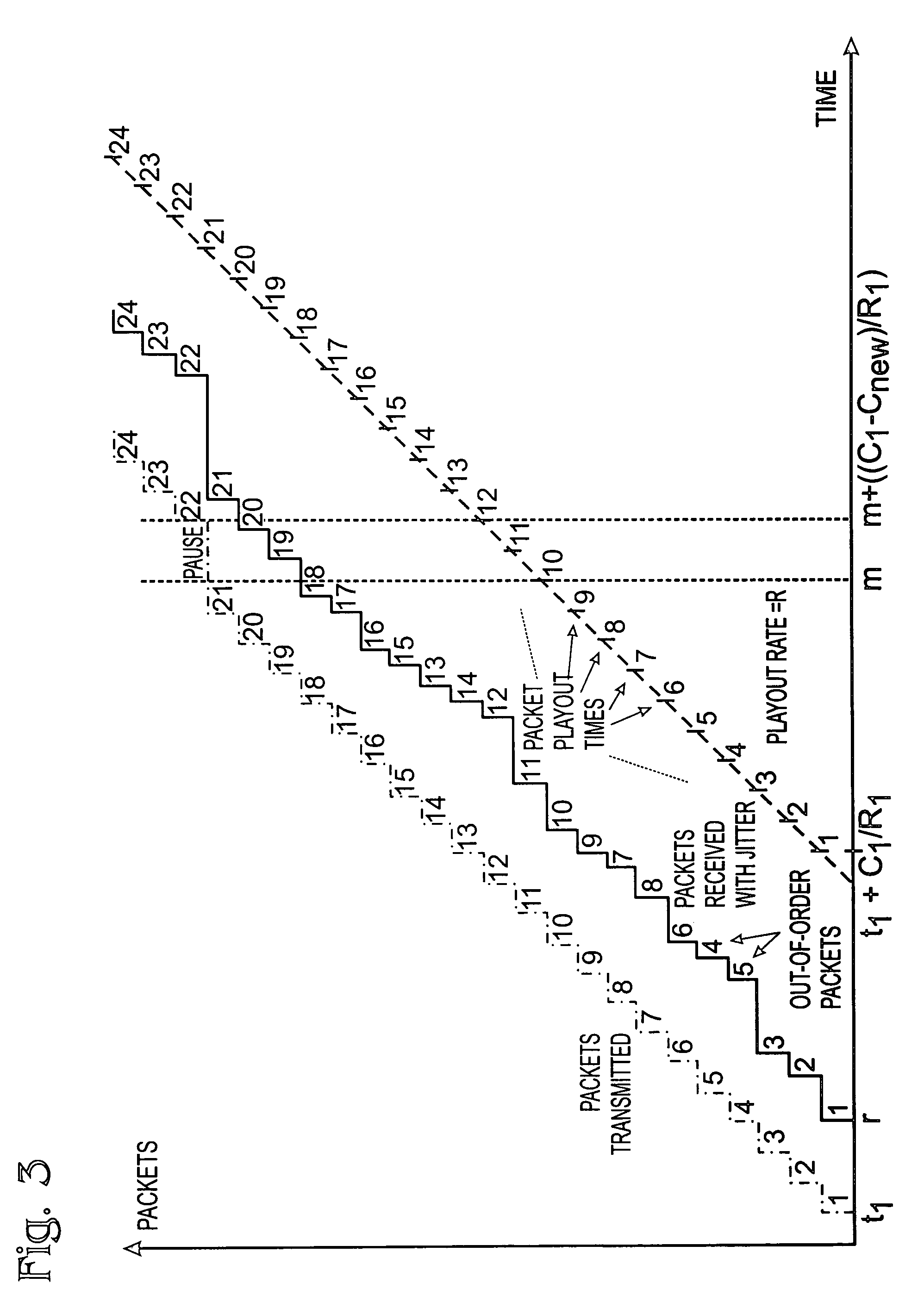System and method for simultaneous media playout
a simultaneous media and media technology, applied in the field of multicast or unicast media communication, can solve the problems of unreliable udp service, packets may have a variable delay before reaching the clients, packets may not reach the clients,
- Summary
- Abstract
- Description
- Claims
- Application Information
AI Technical Summary
Benefits of technology
Problems solved by technology
Method used
Image
Examples
case 1
[0108]FIGS. 5a through 5c illustrate additional examples of the present invention adaptation process. During the adaptation period (increased rate transmission time period) of the server, if a newer client joins at time t, thus lowering the buffering capacity:[0109] If (Cnew1)t+C1) (FIGS. 5a and 5b), the server immediately pauses the transmission for time
[0110]((C1+(Rmin-R1)t-Cnew)R1),
case 2
where t is the total duration the media was transmitted at rate Rmin. After this pause the server reverts back to the original transmission rate of R1.[0111] If (Cnew>(Rmin−R1)t+C1) (FIG. 5c), the server calculates a newer value of Rmin, and streams at this increased rate for time
[0112](Cnew-C1)-(Rmin-R1)t(Rmin-R1.
case 3
After this increased rate transmission time period the server reverts back to the original transmission rate of R1.[0113] If (Cnew=(Rmin−R1)t+C1), server reverts the transmission to the rate R1.
[0114]The implementation of the above three cases can be simplified by assuming a hypothetical buffer at the server side. Two variables: current_buffer_level and target_buffer_level can be used to keep track of the fill level and the target level of the hypothetical buffer. If a newer client joins, thus lowering the buffering capacity, the target_buffer_level is set to the Cnew. Then, the three cases above can be implemented as follows.[0115]Case 1: If (target_buffer_level
[0116](current_buffer_level-target_buffer_level)R1,
then reverts back to the transmission at the rate of R1.[0117]Case 2: If (target_buffer_level>current_buffer_level), a new Rmin is found, where Rmin=Min(Rclient, Rserver), and the media stream is supplied at this increased rate for time
[0118](target_buffer_level-current_b...
PUM
 Login to View More
Login to View More Abstract
Description
Claims
Application Information
 Login to View More
Login to View More - R&D
- Intellectual Property
- Life Sciences
- Materials
- Tech Scout
- Unparalleled Data Quality
- Higher Quality Content
- 60% Fewer Hallucinations
Browse by: Latest US Patents, China's latest patents, Technical Efficacy Thesaurus, Application Domain, Technology Topic, Popular Technical Reports.
© 2025 PatSnap. All rights reserved.Legal|Privacy policy|Modern Slavery Act Transparency Statement|Sitemap|About US| Contact US: help@patsnap.com



